Julia Kern’s writing for FasterSkier is made possible through the generous support of our friends at The Memory Clinic, Bennington, Vermont. Since, 1987, clinicians at The Memory Clinic have been providing diagnosis and treatment of memory loss. If someone you care about is showing signs of memory loss please reach out to The Memory Clinic.

How many pairs of skis do World Cup athletes have in their fleet? You may surprised by the answers, ranging from 20 to 60 pairs of skis. Imagine picking the race ski on a given World Cup race where every 0.5% matters. My introduction to ski testing started at the end of high school when I was about 16. I went from picking between my “warm” ski or my “cold” ski to deciding between eight to ten pairs. Picking my race ski has become complex—in fact, a science. Thankfully, I have a very curious and passionate wax tech named Eli Brown who manages my skis and wax for me, and often even more. Eli is the skiing equivalent of a PGA Caddy, supporting me not just in the equipment aspect of skiing but also in the technical and mental aspects. He spends far more time with me in the hours before the race than anyone else. Over the past five years, we have built our system and a trusted collaboration on the World Cup. The foundation for a successful ski fleet begins with a base ski fleet in partnership with Atomic, continuing to evolve by frequent testing of skis with Eli and Atomic throughout the season, narrowing down the options the day before each race and on race morning.
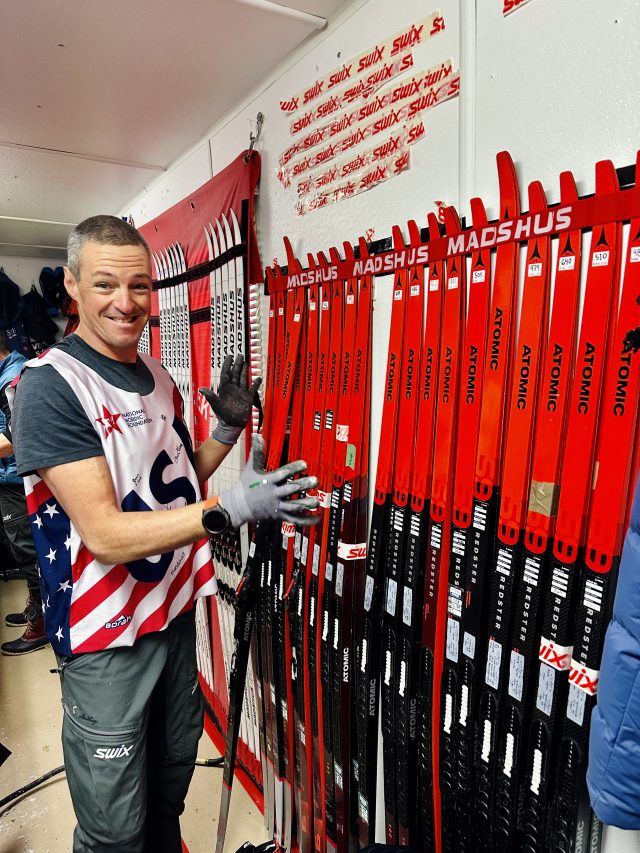
Building A Ski Fleet
We rely heavily on support from the ski companies. It has been incredible to work with Atomic! I switched to Atomic two years ago, which meant building an entirely new fleet of skis. At first, Eli and I thought there would be a tough learning curve in the first year. In some ways, there was, but a ski fleet is an evolving and dynamic work in progress. In my first year on Atomic skis, I had some of the best skis I have ever had; in my second year with Atomic, we built a complete fleet.
Ski companies travel the entire World Cup circuit with us, so every weekend the skis that have not been winning tests are returned to Atomic, and the new winning skis that Atomic has tested are delivered to us—a trading system. Together, we are an extension of R&D for Atomic–we test new prototypes and give feedback on what is working. The prototypes often become the new retail ski model 1-3 years later. Atomic has been experimenting with different shapes of skis in skate (more width in the tips and tails); it has been exciting to be a part of the R&D process, taking part in the ongoing innovation in cross-country skiing.
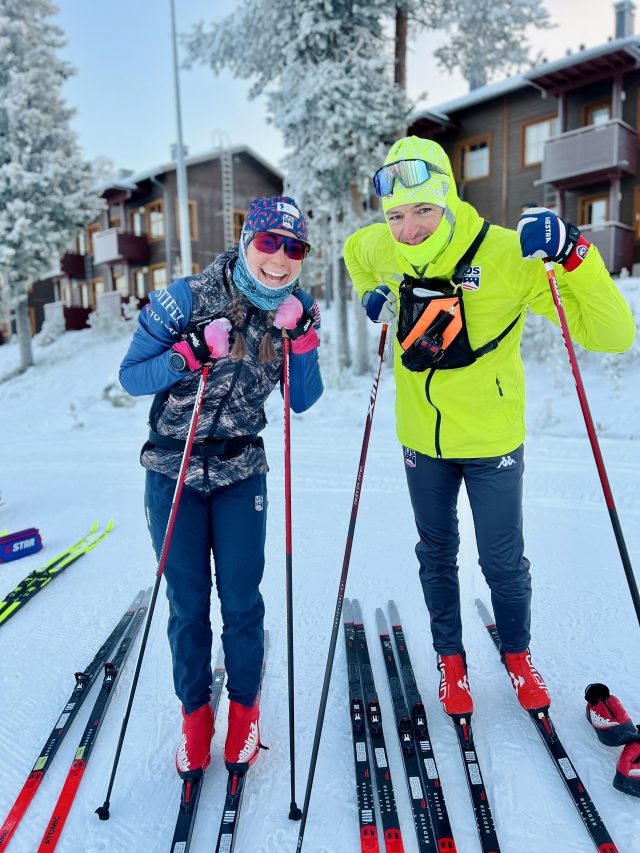
Day Before Race
Pre-race is often busy and a bit chaotic. Eli and I will have only 20 minutes to test before I join the team for our pre-race intensity. If the conditions are similar to race day, Eli will often glide out 2-8 pairs of skis with another tech to narrow down the options for me. Then Eli and I will go out and ski, testing by feel on four pairs of skis, swapping them back and forth, and comparing what we think about them.
Atomic does their separate ski testing and will deliver a new pair to Eli if they find another fast pair, and Eli adds them to the race day options. The skis get cleaned and prepped for testing on race day.

Night Before Race
Eli usually will finish skis with a liquid glide wax and apply a binder to sit overnight. Atomic will check in and offer advice on what skis, grinds, and bases they think will work.
Race Morning
Once the techs arrive at the wax truck, Eli will check the weather and the race course to see what the snow is like. Some prepared skis might get removed from race options if they don’t match the conditions. Eli will potentially swap a pair of skis with Atomic and prepare it to match the other potential race skis.
Two Hours Before Start
Eli glides out 4-6 pairs with another tech, coach, or Atomic rep to narrow down the options before I arrive for testing.
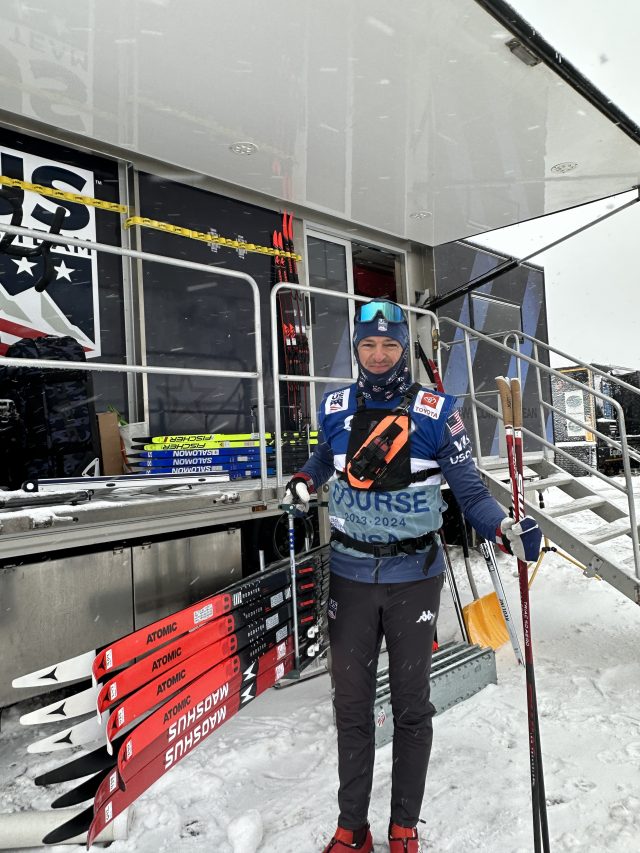
Ninety Minutes Before Start
I meet Eli for ski testing (sometimes Atomic or coach Kristen also joins us). We test 2-3 pairs by feel, adjust the kick and glide out pairs if the kick is close, and pick a winner. Due to the fluoro testing check-in time limitation, there is a large time gap between testing and race time, often causing a rapid change in conditions given all the traffic on the course. Eli will take the second- or third-best ski and make it my warm-up ski, touching them up to be waxed similar or close to the race pair. My warm-up ski acts as a test ski so I can give feedback that can be used to dial in the race ski closer to the start if the conditions change.
It is also worth mentioning that most World Cup techs wax for two athletes, sometimes three. Eli usually works with Ben Ogden and me, which means he has a very tight schedule. Especially on sprint days when Ben and I are racing at a similar time, we have to be timely and efficient so we finish our test in time for Ben and Eli to also test.
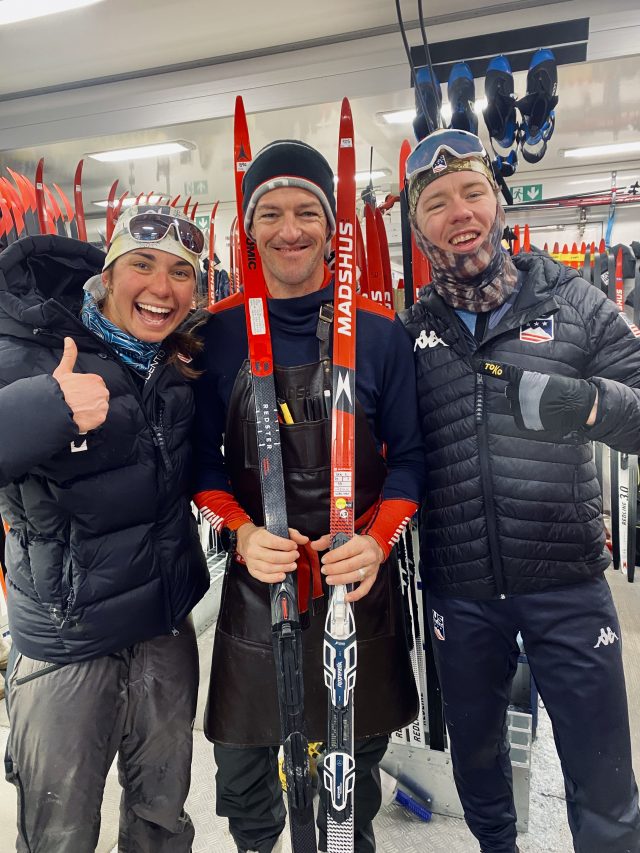
One Hour Before Start
Usually, an hour before the start is when we pick race skis. Eli usually leaves around 30 minutes to prep the skis. Prepping skis includes running to the truck (distances can be quite far), doing the glide wax procedure that the U.S. wax team came up with, adding hand structure, and adjusting the kick wax. Then Eli or another tech runs them to the stadium for flouro testing . . . can’t be late for this!
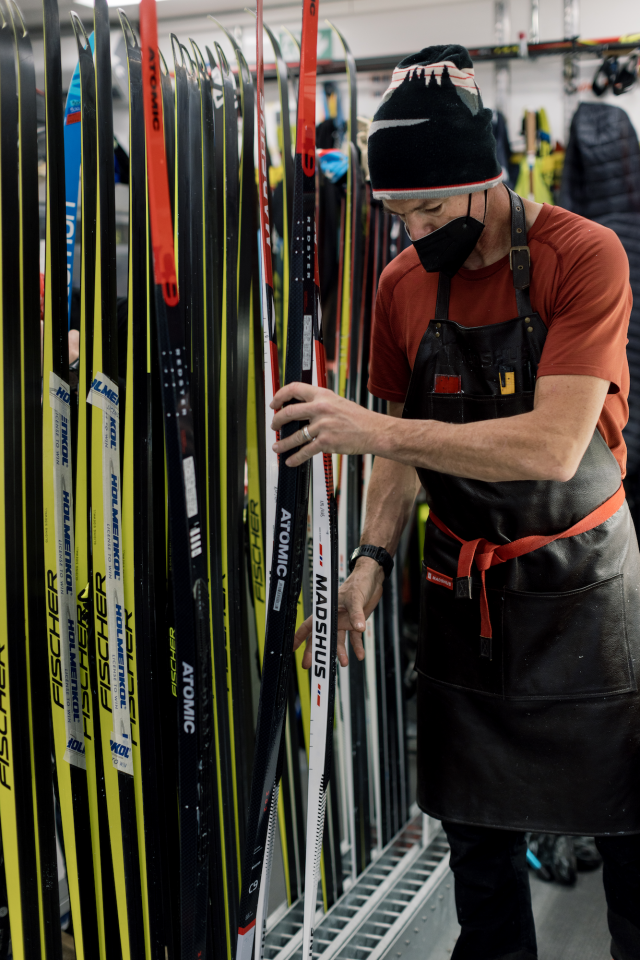
Half Hour Before Start
Race skis are required to be checked in for flouro testing 30 minutes prior to the start. After a few minutes, the skis complete the fluoro test procedure and are placed in a closed area where the techs are allowed to adjust only kick wax. No glide waxing is allowed in this area since the skis have already been tested for flouro. One last check-in with Eli to see how the warm-up skis are working before making any final adjustment to the kick wax. Then the skis are placed in the final rack to go to the start.

0:00 Race Start
Skis are picked, waxed, flouro tested, and touched up. I grab my skis from the rack and head straight to the start. It’s go time!
As you can see, there are many moving parts to choosing the race ski of the day! It is a dynamic relationship between Eli, Atomic, our USA wax team, and myself. The 2023/24 season has been our first year with the added layer of fluoro testing, extending the timeline even longer on race day and adding another step. However, FIS has done an excellent job of making the process as smooth as possible. I have completed 133 World Cup starts now, with Eli as my tech at almost every race, so we have had a lot of practice dialing in our process. Nonetheless, every race and every training day is a learning opportunity for both of us. Learning never stops; that is why ski selection and waxing is a fascinating science!




